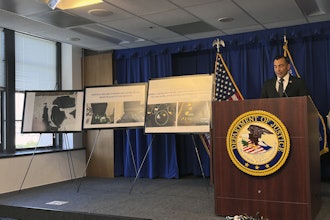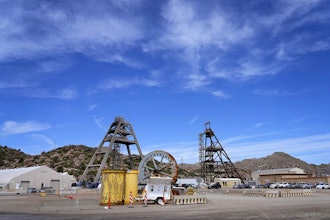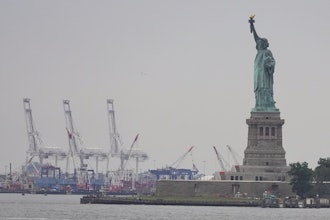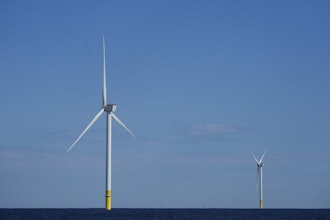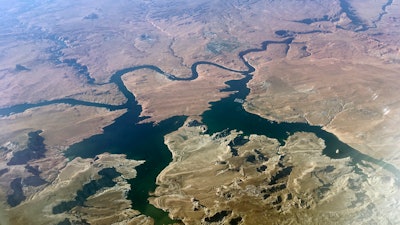
Interstate water disputes are as American as apple pie. States often think a neighboring state is using more than its fair share from a river, lake or aquifer that crosses borders.
Currently the U.S. Supreme Court has on its docket a case between Texas, New Mexico and Colorado and another one between Mississippi and Tennessee. The court has already ruled this term on cases pitting Texas against New Mexico and Florida against Georgia.
Climate stresses are raising the stakes. Rising temperatures require farmers to use more water to grow the same amount of crops. Prolonged and severe droughts decrease available supplies. Wildfires are burning hotter and lasting longer. Fires bake the soil, reducing forests’ ability to hold water, increasing evaporation from barren land and compromising water supplies.
As a longtime observer of interstate water negotiations, I see a basic problem: In some cases, more water rights exist on paper than as wet water – even before factoring in shortages caused by climate change and other stresses. In my view, states should put at least as much effort into reducing water use as they do into litigation, because there are no guaranteed winners in water lawsuits.
Dry times in the West
The situation is most urgent in California and the Southwest, which currently face “extreme or exceptional” drought conditions. California’s reservoirs are half-empty at the end of the rainy season. The Sierra snowpack sits at 60% of normal. In March 2021, federal and state agencies that oversee California’s Central Valley Project and State Water Project – regional water systems that each cover hundreds of miles – issued “remarkably bleak warnings” about cutbacks to farmers’ water allocations.
The Colorado River Basin is mired in a drought that began in 2000. Experts disagree as to how long it could last. What’s certain is that the “Law of the River” – the body of rules, regulations and laws governing the Colorado River – has allocated more water to the states than the river reliably provides.
The 1922 Colorado River Compact allocated 7.5 million acre-feet (one acre-foot is roughly 325,000 gallons) to California, Nevada and Arizona, and another 7.5 million acre-feet to Utah, Wyoming, Colorado and New Mexico. A treaty with Mexico secured that country 1.5 million acre-feet, for a total of 16.5 million acre-feet. However, estimates based on tree ring analysis have determined that the actual yearly flow of the river over the last 1,200 years is roughly 14.6 million acre-feet.
The inevitable train wreck has not yet happened, for two reasons. First, Lakes Mead and Powell – the two largest reservoirs on the Colorado – can hold a combined 56 million acre-feet, roughly four times the river’s annual flow.
But diversions and increased evaporation due to drought are reducing water levels in the reservoirs. As of Dec. 16, 2020, both lakes were less than half full.
Second, the Upper Basin states – Utah, Wyoming, Colorado and New Mexico – have never used their full allotment. Now, however, they want to use more water. Wyoming has several new dams on the drawing board. So does Colorado, which is also planning a new diversion from the headwaters of the Colorado River to Denver and other cities on the Rocky Mountains’ east slope.
 Drought conditions in the continental U.S. on April 13, 2021.U.S. Drought Monitor, CC BY-ND
Drought conditions in the continental U.S. on April 13, 2021.U.S. Drought Monitor, CC BY-ND
Utah stakes a claim
The most controversial proposal comes from one of the nation’s fastest-growing areas: St. George, Utah, home to approximately 90,000 residents and lots of golf courses. St. George has very high water consumption rates and very low water prices. The city is proposing to augment its water supply with a 140-mile pipeline from Lake Powell, which would carry 86,000 acre-feet per year.
Truth be told, that’s not a lot of water, and it would not exceed Utah’s unused allocation from the Colorado River. But the six other Colorado River Basin states have protested as though St. George were asking for their firstborn child.
In a joint letter dated Sept. 8, 2020, the other states implored the Interior Department to refrain from issuing a final environmental review of the pipeline until all seven states could “reach consensus regarding legal and operational concerns.” The letter explicitly threatened a high “probability of multi-year litigation.”
Utah blinked. Having earlier insisted on an expedited pipeline review, the state asked federal officials on Sept. 24, 2020 to delay a decision. But Utah has not given up: In March 2021, Gov. Spencer Cox signed a bill creating a Colorado River Authority of Utah, armed with a US$9 million legal defense fund, to protect Utah’s share of Colorado River water. One observer predicted “huge, huge litigation.”
How huge could it be? In 1930, Arizona sued California in an epic battle that did not end until 2006. Arizona prevailed by finally securing a fixed allocation from the water apportioned to California, Nevada and Arizona.
Litigation or conservation
Before Utah takes the precipitous step of appealing to the Supreme Court under the court’s original jurisdiction over disputes between states, it might explore other solutions. Water conservation and reuse make obvious sense in St. George, where per-person water consumption is among the nation’s highest.
St. George could emulate its neighbor, Las Vegas, which has paid residents up to $3 per square foot to rip out lawns and replace them with native desert landscaping. In April 2021 Las Vegas went further, asking the Nevada Legislature to outlaw ornamental grass.
The Southern Nevada Water Authority estimates that the Las Vegas metropolitan area has eight square miles of “nonfunctional turf” – grass that no one ever walks on except the person who cuts it. Removing it would reduce the region’s water consumption by 15%.
Water rights litigation is fraught with uncertainty. Just ask Florida, which thought it had a strong case that Georgia’s water diversions from the Apalachicola-Chattahoochee-Flint River Basin were harming its oyster fishery downstream.
That case extended over 20 years before the U.S. Supreme Court ended the final chapter in April 2021. The court used a procedural rule that places the burden on plaintiffs to provide “clear and convincing evidence.” Florida failed to convince the court, and walked away with nothing.
This article is republished from The Conversation under a Creative Commons license. Read the original article here: https://theconversation.com/interstate-water-wars-are-heating-up-along-with-the-climate-159092.










